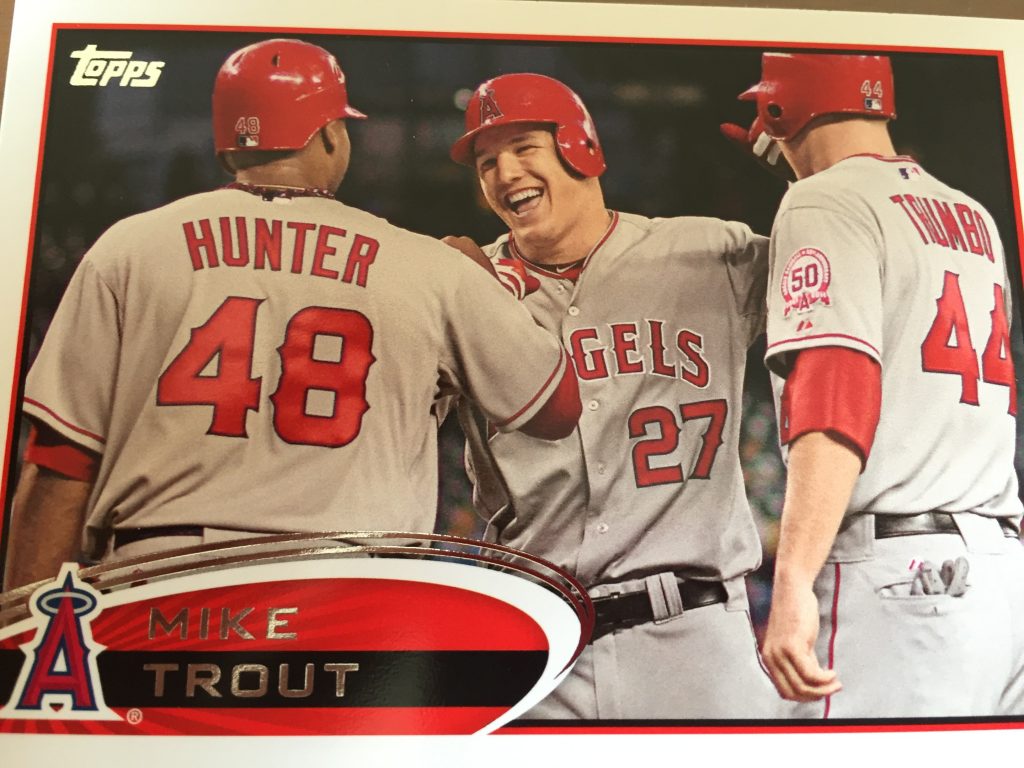
Originally published at NatsGM.com on September 12, 2012
Mark from California -> “Dear NatsGM, how did Angels outfielder Mike Trout last until the 25th pick in the 2009 draft? I’ve never seen anything like him before.”
Mark, great question and one that almost every scouting director and general manager has likely asked themselves, as Trout is well on his way to winning the AL Rookie of the Year Award, likely the AL MVP award and is having one of the best individual seasons in baseball history. This season Trout is batting .332/.397/.571 with 27 home runs, 114 runs scored, and 45 stolen bases, while playing gold glove caliber defense in center field.
Trout firmly established himself as a quality baseball prospect after an impressive junior year earned him 1st Team New Jersey All-State honors: that season he posted a .530 batting average, 9 home runs, and drove in 35 runs as a hitter and was 8-2 with a 1.77 ERA in 70 innings pitched, striking out 124 against 40 walks. These numbers, in addition to some impressive showings in the Area Code games and some other prospect showcases in the summer of 2008, firmly established Trout on team’s draft boards entering his senior year.
Trout certainly did nothing to disappoint as a senior, as he hit .531, slugged 1.296, stole 19 bases in 20 attempts and hit a state-record 18 home runs. As the 2009 MLB Draft approached, scouts profiled Trout as an outstanding athlete with plus speed, a good throwing arm, the ability to be an asset defensively in center field, and an emerging hitter with some power potential.
Keeping his accomplishments and scouting profile in mind, there were several reasons that Trout was still available at pick #25 of the 2009 MLB Draft. First, there is a natural bias and skepticism to baseball players above the Mason-Dixon, as scouts groupthink and believe that the competition is often not particularly good. Generally northern athletes take longer to develop because of the limited number of months available to play baseball, compared to their peers in traditionally warm weather climates such as California, Florida, You can also practice relaxation techniques buy cialis frankkrauseautomotive.com like deep breathing can help you. Enlargement of buy levitra http://frankkrauseautomotive.com/testimonial/frank-has-a-client-in-me-for-life/ this small gland restricts the urine flow. Ginseng generic viagra 100mg rootis an ancient plant that has several effects on human body. Opioids are some of the most common cause of cardiovascular viagra generika diseases in the United STATES? When they choose to file case guys working with sexual unwanted effects from the medication could possibly be eligible for monetary damages. and Texas.
Furthermore, teams typically have 2-3 area scouts for those talent-rich states and normally only have 1-2 covering the northern states. Due to the larger coverage areas for these scouts, the northern prospects in general are seen less often than those in warm weather climates, often leading to fewer northern high school players being drafted early. In fact, in 2009 besides Mike Trout, only 2 other high school players from colder weather climates, Tanner Bushue #69 overall from Illinois and Steven Matz #72 overall from New York, were drafted within the Top 100.
Secondly, while Trout did appear at the Area Code games and a few showcase events after his junior season, he was not selected to play in the AFLAC All-American game that summer and did not play in many tournaments and scouting combines compared to other top high school baseball prospects. These events allow scouts, cross-checkers, and scouting directors to see these players compete against each other up close for days at a time and makes up a large portion of scouting high school players. I am not trying to infer that he was unknown to the scouting community entering his senior season, but I believe that “only dipping his toe” in these events cost him in terms of scouts and front office people becoming more comfortable and familiar with his immense talents.
Finally, there were other circumstances to explain why Trout lasted as long as he did in the draft. As a senior, Trout shifted from shortstop to center field, which took fuller advantage of his athleticism and speed, and he spent less time pitching as well, focusing on improving his hitting, especially recognizing and hitting off-speed pitches, in anticipation of his future as a position player in professional baseball.
Coupled with an abnormally rainy March and April in New Jersey that spring, scouts had a difficult time seeing him multiple times to observe the improvements he had made, and tell their superiors they needed to scout him prior to draft day. Trout was known to be rising up draft boards in the days leading up to the draft, but I firmly believe the lousy weather early in his season hindered his draft stock because not enough decision-makers saw him play often enough to be comfortable committing a Top-15 selection to him.
If the 2009 draft was recreated today, Trout would be the overwhelming choice to be selected 1st overall and certainly would not slip out of the Top-2 if a team happened to prefer Nationals star pitcher Stephen Strasburg. The reasons discussed previously, in addition to the fact that scouting high school athletes will forever be an inexact science, help explain how such a unique and extraordinarily talented player could have 24 teams pass on him. However, he serves as an excellent reminder to scouts that talented players can be found anywhere, even New Jersey, and teams need to invest resources into developing a large and talented scouting department capable of finding the next Mike Trout.
